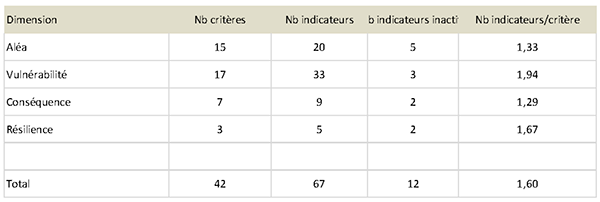Watershed prioritization tool for flood risk management
Contribution to the prioritization of watersheds to be mapped in order to ensure public safety from flooding through the use of the results and the tool.
Project details
Principal(s) investigator(s)

Context
Following the floods of 2017, the government of Québec launched a reflection on flood risk management in the context of climate change.
As part of the resulting initiatives, the MELCC set up the INFO-Crue project, which aims to map flood risk for southern Québec. As it is not possible to map the entire territory of Québec simultaneously, there is a need to determine the order in which the watersheds should be mapped. This prioritization must be performed using a rigorous process and in keeping with government policy directions for flood risk management.
Objective(s)
-
This project aims to build on existing work to develop a decision support tool
using a multicriteria analysis methodology to prioritize watersheds in the context of flood risk management.
This project is part of the INFO-Crue initiative set up by the MELCCFP.
Methodology
-
Based on the AHP (Analytic Hierarchy Process) multicriteria method, construction of a hierarchical tree of criteria representing the flood risk assessment process and selection of prioritization criteria in collaboration with the thematic team composed of ministries and organizations concerned by the issue;
-
Weighting of the prioritization criteria by combining the AHP method with a consultation process involving the members of the thematic team;
-
Development of a Web-based decision support tool to prioritize watersheds according to the selected criteria and using the TOPSIS (Technique for Order Preference by Similarity to Ideal Solution) multicriteria aggregation method;
-
Drafting of a user guide for the prioritization tool and training of system users.
Results
A thematic committee was involved in the structuring of the problem. The approach used to prioritize watersheds for the purpose of the INFO-Crue program needed to be in line with broad government policy directions aimed primarily at the protection of persons, the reduction of material damages and economic losses, and the protection and conservation of natural ecosystem functions.
With this in mind, and to take into consideration the fundamental components necessary for risk assessment, a hierarchical structure with four fundamental dimensions (threat, vulnerability, historical consequences and resilience) and a range of sub-dimensions and criteria was constructed and validated by the thematic team. This process also led to the development and proposal of an exhaustive list of indicators for each criterion by the project implementation team. From this exhaustive list, a simplified list of indicators was selected, consisting only of those for which data are available/accessible.

Figure 1 :Summary of the number of criteria and indicators per dimension
Meanwhile, three consultation meetings were held with the thematic committee to weight the criteria using the AHP approach. The criteria were first compared, two by two. At the end of this process, the Saaty scale was used to attribute a score to each pairwise comparison. Weightings were then calculated, reviewed according to the consistency indices, and validated by the thematic team.
At the end of this process, the “Vulnerability” dimension with its sub-dimensions related to social, physical, economic and environmental vulnerabilities appeared to be the dominant factor in the watershed prioritization.

Figure 2 : Weighting of the 4 main dimensions
The ultimate output of this project was the creation of a watershed prioritization tool. This tool is composed of a set of integrated functionalities that cover the complete prioritization process by combining the AHP and TOPSIS methods. Il includes a knowledge base consisting of the hierarchy of the risk analysis components and the pairwise comparisons resulting from the consultation exercise.
The tool developed is flexible because it offers the possibility of choosing, for a given prioritization exercise, only certain element in the hierarchy of risk analysis components.
Benefits for adaptation
Benefits for adaptation
Contribution to the prioritization of watersheds to be mapped in order to ensure public safety from flooding through the use of the results and the tool.
Support for adaptation through the development of a reproductive methodology allowing the acquisition of knowledge aimed at better decision-making in the face of climate change.
Potential use of the tool to prioritize other measures related to flood risk management.
Scientific publications
Other participants
-
Ministère de la Sécurité publique (MSP)
-
Ministère de l’Environnement et de la lutte aux Changements Climatiques (MELCC)
-
Ministère des Affaires municipales et de l’Habitation (MAMH)
-
ROVBQ
Funding
This project was funded by Ouranos as part of its support for the MELCC’s INFO-Crue initiative
